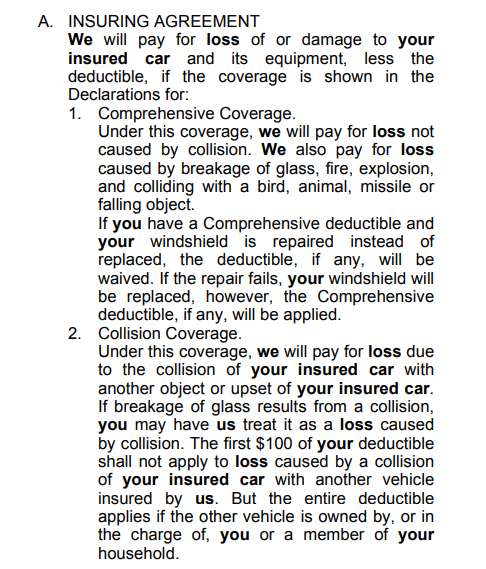The 4-Minute Rule for Pacific Prime
Wiki Article
The Single Strategy To Use For Pacific Prime
Table of ContentsOur Pacific Prime PDFsThe Definitive Guide for Pacific Prime9 Simple Techniques For Pacific PrimeFascination About Pacific PrimeGet This Report about Pacific Prime

This is because the data were accumulated for a period of solid economic performance. Of the approximated 42 million people that were without insurance, almost regarding 420,000 (regarding 1 percent) were under 65 years old, the age at which most Americans become eligible for Medicare; 32 million were adults in between ages 18 and 65, about 19 percent of all adults in this age team; and 10 million were children under 18 years of age, regarding 13.9 percent of all youngsters (Mills, 2000).
These estimates of the number of individuals without insurance are generated from the annual March Supplement to the Present Populace Study (CPS), conducted by the Census Bureau. Unless or else kept in mind, nationwide price quotes of people without wellness insurance coverage and percentages of the populace with different kinds of protection are based upon the CPS, one of the most extensively used source of estimates of insurance coverage and uninsurance rates.
The Best Strategy To Use For Pacific Prime

Still, the CPS is particularly useful because it produces yearly quotes relatively rapidly, reporting the previous year's insurance protection approximates each September, and because it is the basis for a consistent collection of quotes for greater than two decades, permitting for evaluation of trends in coverage over time. For these reasons, along with the considerable use the CPS in various other research studies of insurance protection that are offered in this record, we depend on CPS quotes, with limitations kept in mind.

The price quote of the number of without insurance people broadens when a population's insurance standing is tracked for several years. Over a three-year duration beginning early in 1993, 72 million people, 29 percent of the united state population, lacked insurance coverage for a minimum of one month. Within a single year (1994 ), 53 million individuals experienced at the very least a month without coverage (Bennefield, 1998a)
Six out of every 10 without insurance grownups are themselves employed. Working does enhance the likelihood that one and one's household members will have insurance, it is not an assurance. Also members of family members with two permanent wage earners have virtually a one-in-ten possibility of being uninsured (9.1 percent uninsured rate) (Hoffman and Pohl, 2000).
The Only Guide for Pacific Prime
New immigrants make up a considerable percentage of individuals without health and wellness insurance coverage. One evaluation has connected a substantial part of the current development in the size of the U.S. without insurance populace to immigrants that arrived in the country between 1994 and 1998 (Camarota and Edwards, 2000). Current immigrants (those that involved the United States within the past four years) do have a high rate of being uninsured (46 percent), however they and their youngsters make up simply 6 percent of those without insurance nationally (Holahan et al., 2001).The connection between health and wellness insurance coverage and accessibility to care is well developed, as recorded later in this chapter. Although the connection between medical insurance and health and wellness results is neither direct nor easy, a considerable professional and wellness solutions research study literary works links medical insurance protection to better accessibility to care, much better high quality, and improved individual and populace health and wellness condition.
Degrees of evaluation for checking out the results of uninsurance. This discussion of health insurance coverage concentrates mostly on the united state population under age 65 due to the fact that practically all Americans 65 and older have Medicare or various other public protection. It concentrates specifically on those without any type of health insurance policy for any size of time.
See This Report on Pacific Prime
The problems encountered by the underinsured are in some aspects similar to those encountered by the uninsured, although they are typically less serious. Health and wellness insurance coverage, nevertheless, is neither necessary neither adequate to gain accessibility to medical solutions. The independent and direct result of health and wellness insurance protection on access to health solutions is well established.
Others will certainly acquire the health treatment they need also without health insurance, by paying for it expense or seeking it from service providers who use care cost-free or at highly subsidized prices. For still others, medical insurance alone wikipedia reference does not ensure invoice of treatment since of various other nonfinancial barriers, such as an absence of health treatment providers in their neighborhood, minimal access to transportation, illiteracy, or etymological and cultural differences.
More About Pacific Prime
Formal research study concerning without insurance populations in the United States dates to the late 1920s and early 1930s when the Board on the Price of Medical Treatment produced a series of reports regarding funding medical professional workplace check outs and hospital stays. This issue ended up being prominent as the numbers of clinically indigent climbed up throughout the Great Clinical depression.Report this wiki page